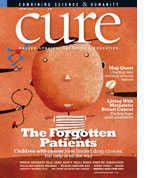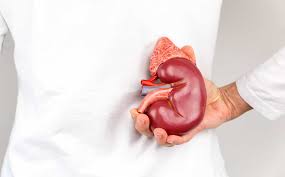Publication
Article
CURE
Taking Up the Fight
Author(s):
Advocates are working together to increase awareness and research in childhood cancers.
Advocates working for childhood cancer have always had to overcome the fact that their patients are small and not particularly famous. There are enough of them to garner public sympathy, but not enough to raise eye-popping amounts of money. Plus, the cause isn’t really about one disease everyone can recognize, but a collection of rare conditions with often cumbersome names.
And chances are, while most people will probably know someone who has been touched by adult disease, they will probably not have seen a child with cancer.
“We’re competing on multiple levels for attention,” says Stacy Haller, executive director of CureSearch National Childhood Cancer Foundation, which raises funds for the Children’s Oncology Group. “Most people who are not touched by childhood cancer are not aware it’s the number one cause of death by disease [in children under 15].”
Within the past decade, though, the once-fragmented voices of pediatric cancer have started to move from a disconnected series of smaller groups into a network with a stronger voice. CureSearch formed the Childhood Cancer Advocacy Network in 2003, and within the past year participation has doubled, from about 3,000 advocates to 6,000 family members, caregivers, former patients, and others willing to spend their time fighting for children with cancer. (To appreciate their challenge, consider that well over one million people have participated in Susan G. Komen’s Race for the Cure events.)
Advocacy efforts today are helped by the fact that the country now has about 300,000 adults who experienced cancer in their youth, and those oncology veterans are finding that life on the other side of cancer still has issues. In many cases, young survivors have become voices for the next generation of children.
“The more we learn, the more needs we are starting to identify,” says Craig Lustig, 44, who was diagnosed at 27 with a pediatric brain tumor and is now director of Children’s Cause for Cancer Advocacy, which was formed in 1999. He and others are finding that lawmakers will now listen to them, and are getting behind such measures as the Caroline Pryce Walker Conquer Childhood Cancer Act (named in honor of Rep. Deborah Pryce’s deceased daughter), which would designate $150 million over five years for research into childhood cancers. (Passed by the House in June, the bill awaits a full Senate vote.) In April, Lustig’s group held its first lobbying blitz on Capitol Hill. CureSearch converged on Washington, D.C., in June, as it has for the past eight years, to urge more funding for research.
Expect more. “How are we going to get what we need for children?” says Aziza Shad, MD, chief of pediatric hematology/oncology at Georgetown University’s Lombardi Cancer Center. “Only by coming together and making our voices heard.”





